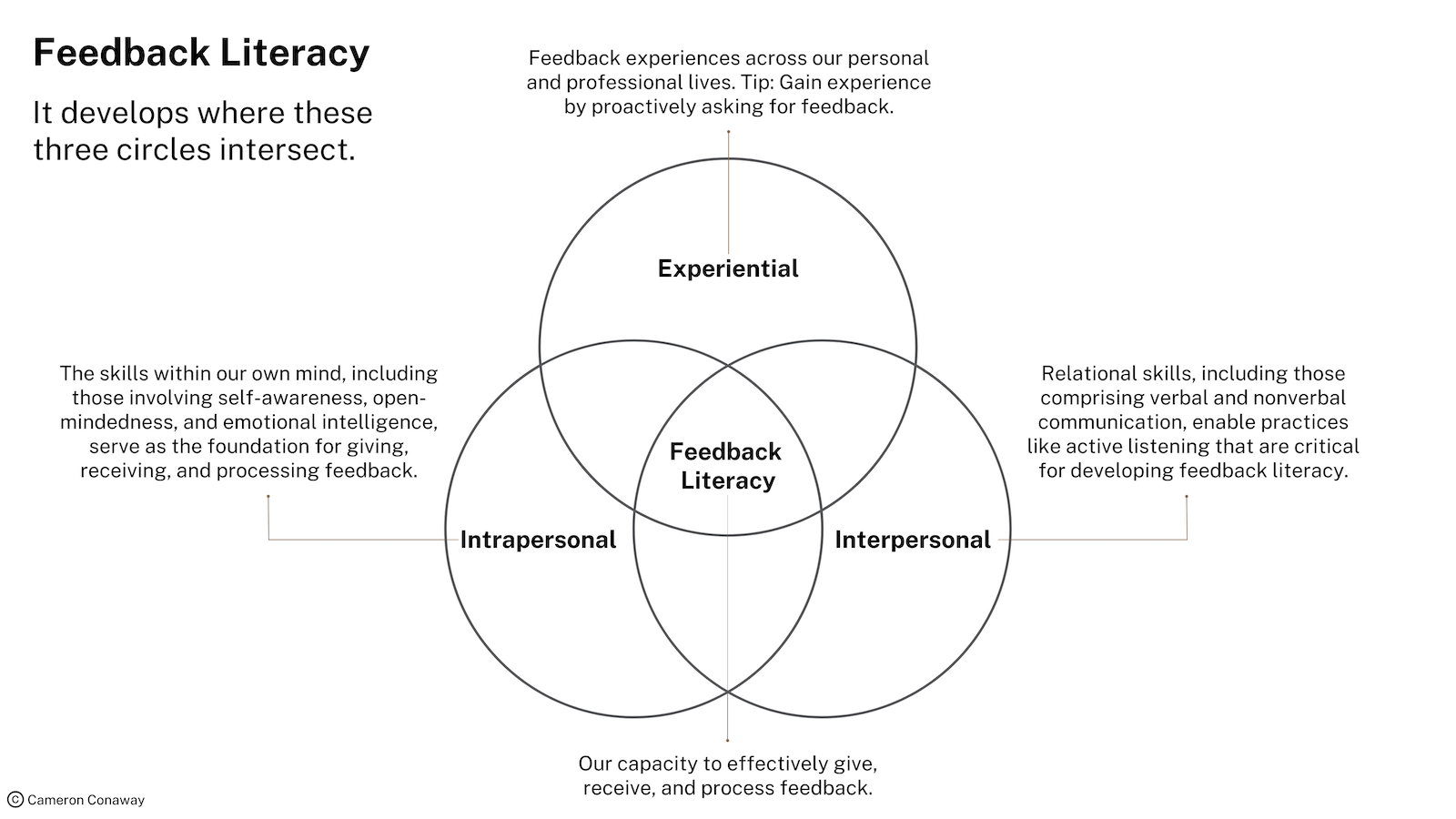Summary. Performative feedback occurs when the feedback giver, receiver, or seeker “performs” their role based on role expectations or ulterior motives rather than authenticity and a genuine desire to help or improve. This article examines where performative feedback communication arises and strategies for moving towards more authentic feedback communication.
Where performative feedback occurs

Feedback givers can slip into performance for various reasons, including:
- They weren’t ready to provide feedback but gave it anyway for fear of being judged.
- They are people managers who feel their role is to provide feedback, so they create opportunities to do so (even if it’s bad feedback).
Feedback receivers can slip into performance when:
- They appease the feedback giver either because they think it is expected of them or because doing so is their defense mechanism against feeling vulnerable.
- They defend themselves by going on the offensive against the feedback giver, not because there’s a reason to but because it’s a role they’ve learned to play.
Lastly, feedback seekers can slip into performance when:
- They want to be perceived as a humble feedback-seeker.
- They want to tick a box to say they’ve sought feedback.
Towards more authentic feedback relationships
In my experience, more authentic feedback arises only when three conditions are met:
(1) More senior leaders model it.
Note: Leaders play an especially vital role. Academic research describes authentic leaders as:
“those who are deeply aware of how they think and behave and are perceived by others as being aware of their own and others’ values/moral perspectives, knowledge, and strengths; aware of the context in which they operate; and who are confident, hopeful, optimistic, resilient, and of high moral character.”
Because many of those qualities can be performed, I’d add this:
Authentic leaders dare to be vulnerable by dropping the role-playing and showing up as they are. In my experience, this type of leadership is felt and noticed, and colleagues are more willing to drop their performative roles when, having let go of yours, you stand bravely in front of them.
(2) Individuals are working on their feedback literacy
(3) Teams/cohorts receive feedback training
If you recall, the Feedback Model from our Constructive Feedback course was porous, signifying both how the feedback literacy of individuals can expand out into the culture and how elements of the feedback culture can impact and influence the individuals:

Because it’s more within our control, an area we as individuals can directly work on, we explored what feedback literacy is and ways we can begin developing in each of its parts:

On the intrapersonal, development might look like this:

On the interpersonal, like this:

And on the experiential, it could be like this:

However, these areas of development demand practice and being in relationship with others.
This is why feedback training—which should expose groups to the fundamentals of giving, receiving, seeking, processing, and using feedback—plays a major role in guiding individuals and the culture toward building more authentic relationships. Without this baseline understanding, particularly in cultures where healthy feedback relationships are not currently being modeled, assumptions are acted on and roles are performed.
Two questions for you.
- Have you felt someone was giving you feedback not because they genuinely had something to share but because they were more senior than you? I’ll raise my hand on that one.
- Have you ever performed as a feedback receiver, perhaps agreeing that feedback was good even before you thought about it? Again, raising my hand.
***
Ready for more authentic feedback relationships? Start by working through this course with your team:
